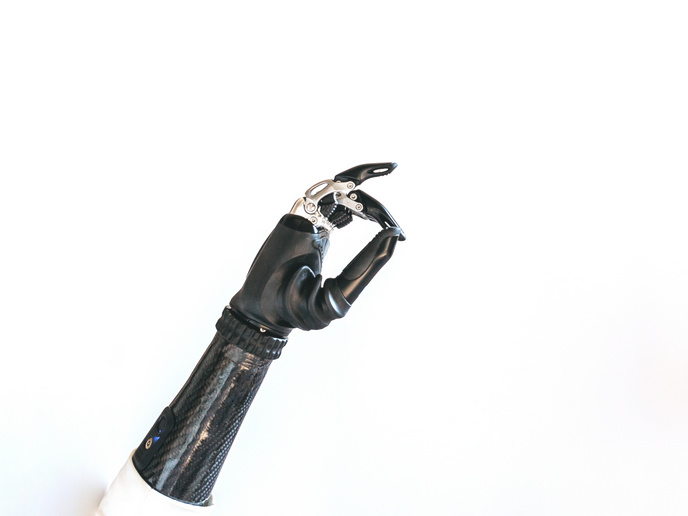Prosthesis of the future makes everyday actions simple
Italian researchers have developed the first magnetically controlled prosthetic hand, allowing amputees to carry out tasks such as picking up a coin, opening a jar and tying their shoelaces. The robotic hand requires neither wires nor electrical connections but only magnets and muscles to control finger movement.
The power of tiny magnets
This achievement was made possible thanks to the development of a radically new interface between the residual arm of the amputee and the robotic hand that decodes motor intentions. The brainchild of researchers supported by the EU-funded MYKI project, the system involves implanting magnets just a few millimetres in size in the residual muscles of the forearm. The implant, which was integrated with the Mia Hand robotic hand developed by Prensilia – a spin-off of MYKI project coordinator Sant’Anna School of Advanced Studies, Italy – was successfully tested on the first patient for a period of 6 weeks. The results are presented in the ‘Science Robotics’ journal. Another EU-funded project, MYTI, now intends to further advance the solution for its adoption into standard-of-care settings. The patient participating in the trial was 34-year-old Daniel who had lost his left hand in September 2022. “I suddenly found myself without a hand: one moment I had it and the next moment it was gone,” the patient explains in a news item published on the Sant’Anna School website. He was chosen for the study because he could feel his hand as if it was still there and the residual muscles in his arm responded to commands from his brain. In April 2023, Daniel underwent surgery to implant magnets in his arm. “This is a significant advancement in the field of advanced prosthetic medicine,” study co-author Dr Lorenzo Andreani from the University Hospital of Pisa comments, attributing the surgery’s success to patient selection based on strict criteria. “One of the most complex challenges was identifying the residual muscles in the amputation area, which were precisely selected using preoperative MRI imaging and electromyography. However, the actual condition of the tissue, due to scarring and fibrosis, required intraoperative adaptation.” Six tiny magnets were implanted in Daniel’s arm. For each magnet, the medical team had to locate and isolate the muscle, position the magnet and check that the magnetic field was oriented the same way. “To make the connection between the residual arm where the magnets were implanted and the robotic hand easier, we made a carbon fibre prosthetic socket containing the electronic system capable of localising the movement of the magnets,” explains study senior author Prof. Christian Cipriani of the Sant’Anna School. The results were far better than hoped for. Daniel could control the movements of his fingers, pick up and move objects of different shapes, and perform actions such as opening a jar, using a screwdriver and cutting with a knife. He could even control the force when grasping fragile objects. “This result rewards a decades-long research path,” states Prof. Cipriani. “We have finally developed a functional prosthesis that meets the needs of a person who has lost a hand.” The team is now ready to extend these results to a broader range of amputations. MYKI (A Bidirectional MyoKinetic Implanted Interface for Natural Control of Artificial Limbs) ended in 2023. The 18-month MYTI (MYokinetic Towards Innovation) project ends in October 2025. For more information, please see: MYKI project website MYTI project
Keywords
MYKI, MYTI, prosthetic, hand, robotic hand, amputee, muscle, arm, magnet



